
Hussenstein: A Historic Landmark in Konstanz
Explore Hussenstein, a historic landmark in Konstanz, commemorating Jan Hus and the pivotal events of the Council of Constance.
Hussenstein, a significant historical landmark in Konstanz, invites tourists to immerse themselves in the rich tapestry of history. This site memorializes the tragic events of the Council of Constance in 1414-1418, where the reformer Jan Hus met his fate. As you explore this poignant location, you will encounter a blend of history and culture that marks it as a must-visit for anyone interested in the heritage of the region.
A brief summary to Hussenstein
- Alten Graben 5, Konstanz, Paradies, 78462, DE
- Visit website
- Monday 12 am-12 am
- Tuesday 12 am-12 am
- Wednesday 12 am-12 am
- Thursday 12 am-12 am
- Friday 12 am-12 am
- Saturday 12 am-12 am
- Sunday 12 am-12 am
Local tips
- Visit early in the morning to enjoy a quiet atmosphere and take photos without crowds.
- Combine your visit with a walking tour of the old town to discover more historical sites nearby.
- Check local events for any historical reenactments or guided tours that might be taking place.
- Bring a camera; the surrounding architecture offers stunning backdrops for photos.
- Consider visiting the nearby museums to gain a deeper understanding of the historical context.
Getting There
-
Car
If you are traveling by car, navigate to Konstanz by following the A81 motorway towards the Lake Constance area. Exit at 'Konstanz' and follow the signs to the city center. Once in the city, head to Alten Graben 5. There is limited street parking available, so plan to arrive early or use a nearby parking garage, which may incur a fee of around €1-2 per hour.
-
Train
For those using public transportation, take a train to 'Konstanz Hauptbahnhof' (main station). From there, exit the station and walk towards the city center. The historical landmark Hussenstein is approximately a 15-minute walk from the station. Head down the Bahnhofstraße, turn left onto the Marktstätte, and then right onto Alten Graben. Hussenstein will be on your right at Alten Graben 5.
-
Bus
You can also take a local bus to reach Hussenstein. Use the 'Stadtbus' service from various locations around Lake Constance to reach the 'Konstanz, Stadtgarten' stop. From there, it is a short 10-minute walk to Hussenstein. Be sure to check the local bus schedules for any potential costs, typically around €2-3 for a single ride.
-
Bicycle
If you're feeling adventurous, consider renting a bicycle. Konstanz is bike-friendly, and you can cycle along the shores of Lake Constance. Follow the bike paths leading into the city and head towards Alten Graben. There are bike racks available near Hussenstein for parking. Rental costs may vary, usually around €10-15 per day.
Discover more about Hussenstein
Iconic landmarks you can’t miss
Münsterpl.
0.9 km
Explore Münsterplatz in Konstanz, a historic square filled with stunning architecture, local culture, and vibrant atmosphere perfect for tourists.
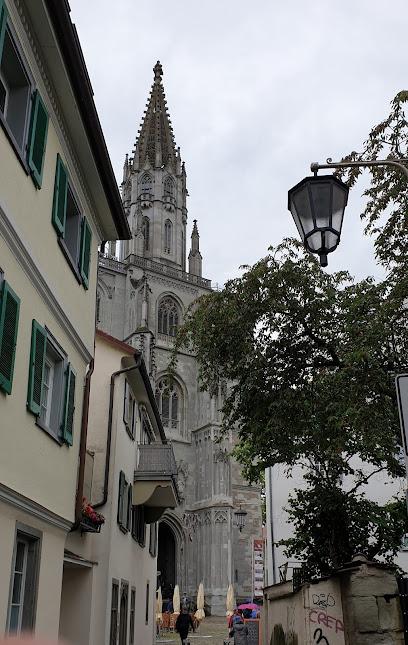
Seerheinbad Zellersguet Tägerwilen
1.5 km
Experience the beauty of Lake Constance at Seerheinbad Zellersguet, a tranquil lakeside beach perfect for swimming, sunbathing, and family fun.
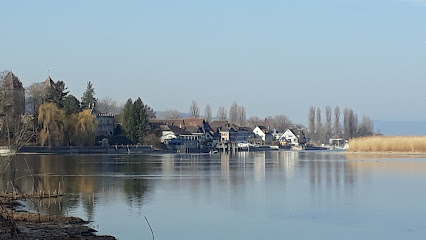
Hotel Kreuzlingen am Hafen
1.6 km
Discover the perfect blend of comfort and scenic beauty at Hotel Kreuzlingen am Hafen, your ideal escape by Lake Constance.

Grosser Abenteuerspielplatz Seeburgpark - Kreuzlingen am Bodensee (CH)
1.8 km
Discover the ultimate family fun at Grosser Abenteuerspielplatz Seeburgpark, a top-rated playground in Kreuzlingen, Switzerland, ideal for children and parents alike.
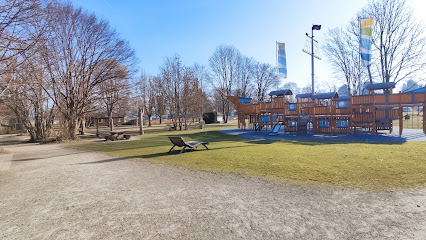
Sofaraum Kantonsschule Kreuzlingen / Oase
1.9 km
Discover the tranquility of Sofaraum Kantonsschule Kreuzlingen, a serene Jain temple offering spiritual insight and cultural richness in the heart of Switzerland.
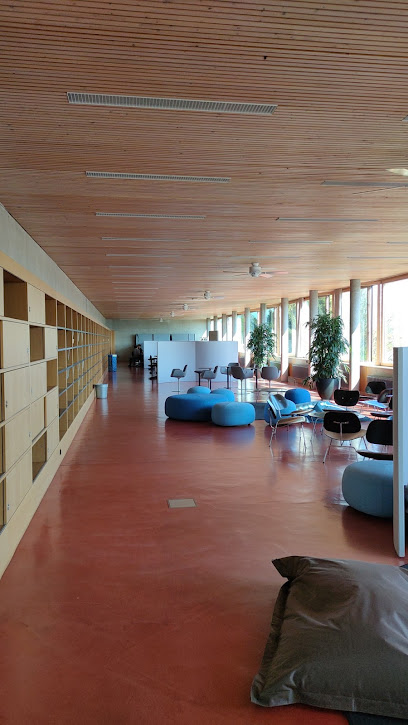
Jugendherberge Kreuzlingen
2.3 km
Discover the beauty of Switzerland from Jugendherberge Kreuzlingen – an affordable youth hostel near Lake Constance, perfect for all travelers.
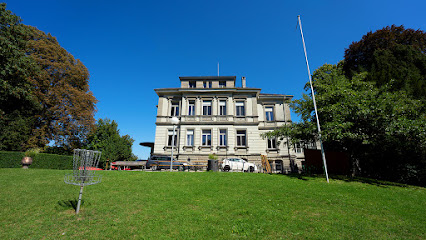
Tägerwilen
2.6 km
Discover unique treasures and local delicacies at the vibrant flea market of Tägerwilen, where Swiss culture comes alive.

Kletterhalle Kreuzlingen
2.6 km
Discover the thrill of rock climbing at Kletterhalle Kreuzlingen, a premier gym offering diverse routes for all skill levels in a vibrant community atmosphere.

Leo Atelier
6.2 km
Discover your artistic potential at Leo Atelier - a creative haven in Kemmental, offering diverse art classes and a vibrant community for all skill levels.

Napoleonturm Hohenrain
6.3 km
Experience breathtaking views and rich history at Napoleonturm Hohenrain, a perfect blend of nature and heritage in Wäldi, Switzerland.
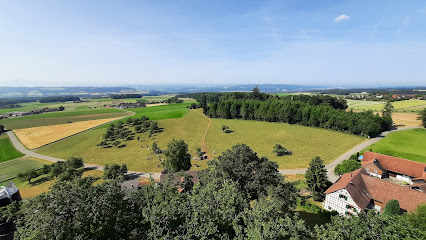
aussichtspunkt
6.4 km
Experience the serene beauty of Aussichtspunkt in Ermatingen, offering stunning views of Lake Constance and a peaceful escape into nature.
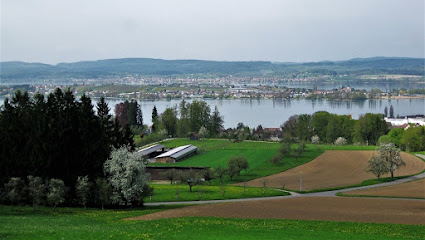
Wolfsberg
6.4 km
Experience the blend of elegance and tranquility at Wolfsberg, Ermatingen's premier conference center, where education meets stunning Swiss landscapes.
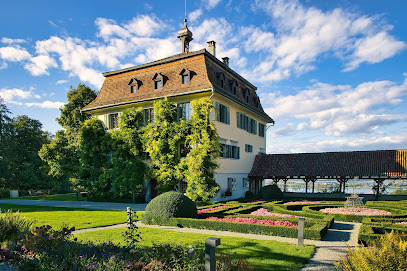
Badi Ermatingen
6.9 km
Discover tranquility at Badi Ermatingen, an outdoor swimming pool offering stunning views of Lake Constance and a perfect family-friendly atmosphere.
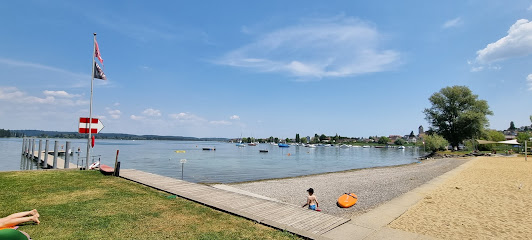
Educational and counseling center Arenenberg
7.9 km
Discover the tranquil charm of Arenenberg, where education meets nature in the heart of Salenstein, Switzerland.
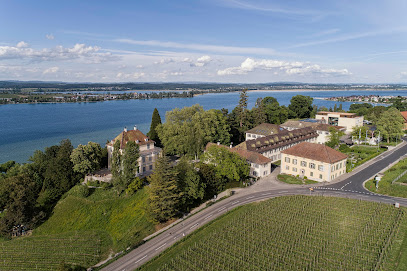
Schloss Arenenberg mit Napoleonmuseum
8.0 km
Explore Schloss Arenenberg, the captivating museum dedicated to Napoleon Bonaparte's family history on the stunning shores of Lake Constance.
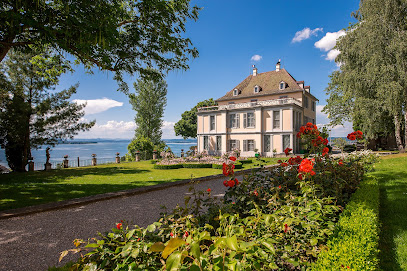
Unmissable attractions to see
Palmenhaus Konstanz
0.1 km
Explore the enchanting Palmenhaus Konstanz, a botanical paradise filled with exotic plants and a serene atmosphere in the heart of Germany.
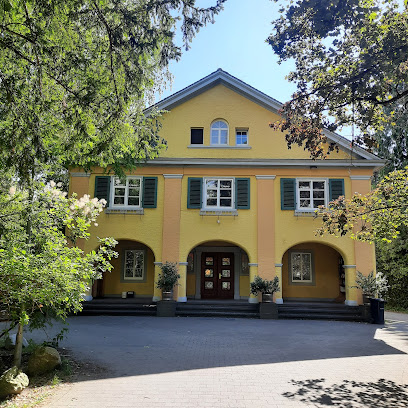
Hus-Museum
0.6 km
Explore the Hus-Museum in Konstanz, a captivating tribute to Jan Hus and the Reformation era, rich in history and cultural significance.
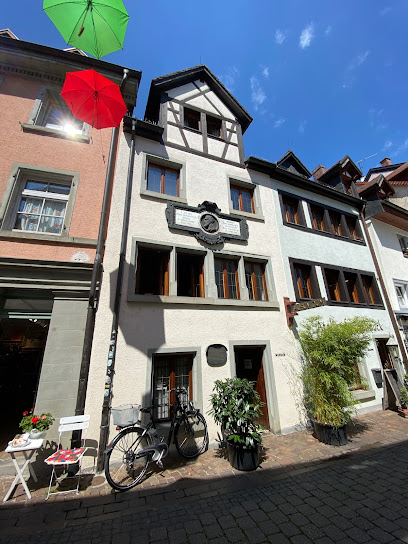
Schnetztor
0.6 km
Discover the historical gem of Schnetztor in Konstanz, a medieval city gate rich in history and architectural beauty.
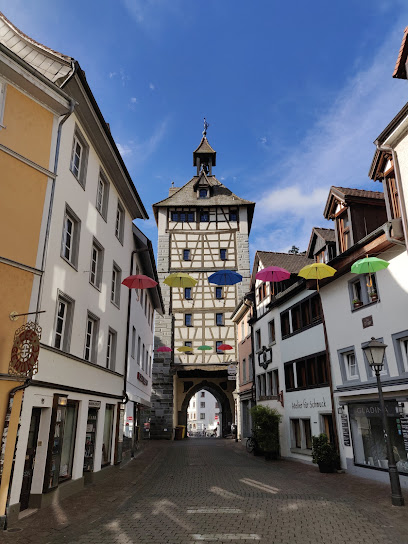
Obermarkt
0.7 km
Discover the vibrant Obermarkt town square in Konstanz, Germany, where history, culture, and local charm converge in a picturesque setting.

Obermarkt Konstanz
0.7 km
Discover the enchanting Obermarkt in Konstanz, a historical landmark blending rich culture, stunning architecture, and vibrant local life.
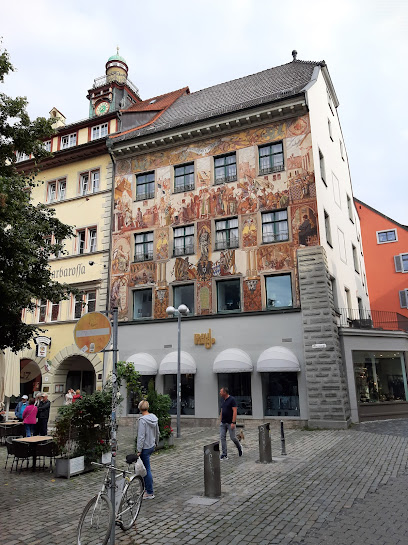
Wessenbergstraße 3
0.7 km
Explore the architectural elegance of Wessenbergstraße 3 in Konstanz, a historical building that embodies the city’s rich cultural heritage.
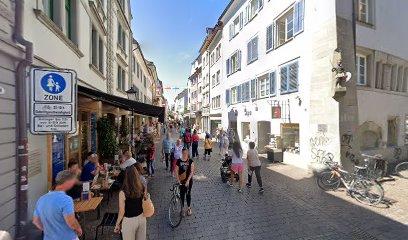
Sankt-Stephan
0.8 km
Discover the serene beauty of Sankt-Stephan, a historic Catholic church in Konstanz, showcasing stunning architecture and vibrant stained glass artistry.
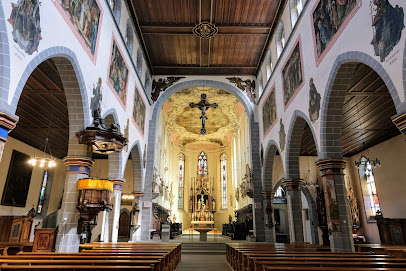
Rosgarten Museum Konstanz
0.8 km
Discover the history and artistry of Konstanz at the Rosgarten Museum, a treasure trove of local heritage and culture.
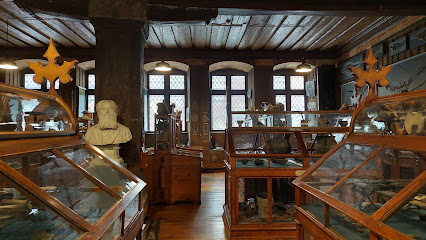
Kaiserbrunnen
0.8 km
Explore the historic Kaiserbrunnen in Konstanz, Germany - a captivating fountain that embodies the city's rich heritage and vibrant culture.
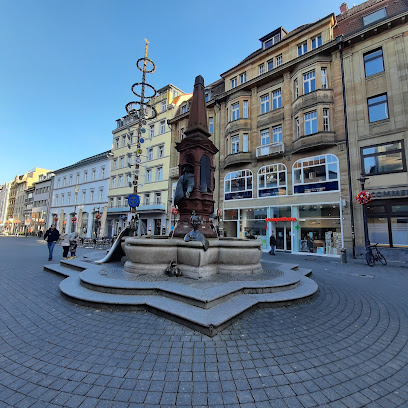
Konstanz Altstadt
0.8 km
Discover the enchanting historic charm of Konstanz Altstadt, where medieval architecture meets vibrant local culture by Lake Constance.
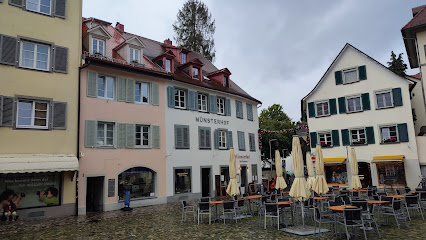
Kammeroper im Rathaushof Konstanz
0.8 km
Discover the enchanting performances at Kammeroper im Rathaushof Konstanz, a hidden gem in the heart of the city, perfect for theater lovers.
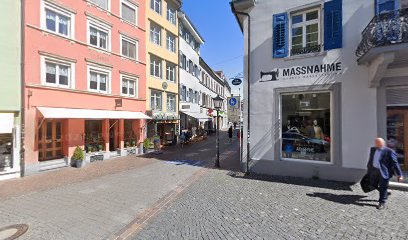
Hohes Haus
0.8 km
Explore Hohes Haus, a historical landmark in Konstanz, embodying the city’s rich architectural heritage and cultural significance.
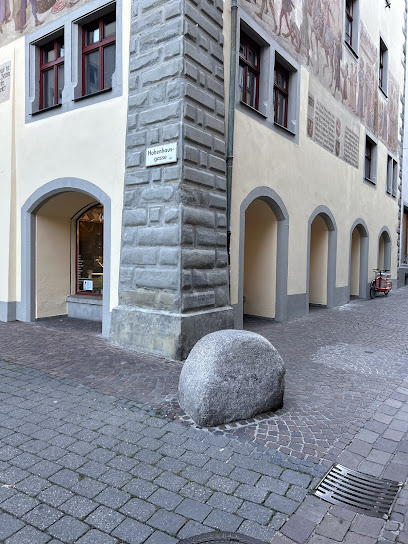
Marktstätte
0.8 km
Experience the essence of Konstanz at Marktstätte, a lively market filled with fresh produce, local crafts, and a vibrant atmosphere.
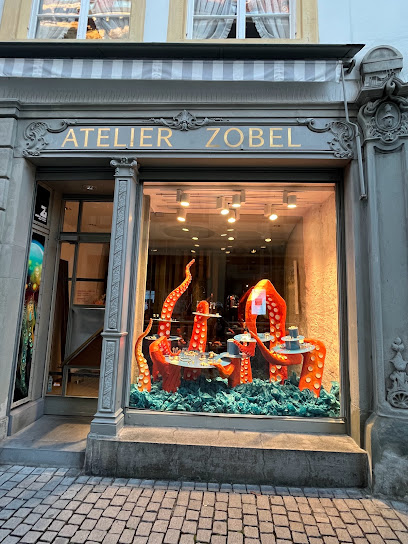
Münster Unserer Lieben Frau
0.9 km
Explore the breathtaking beauty and rich history of Münster Unserer Lieben Frau, a stunning Catholic church and cultural gem in Konstanz.
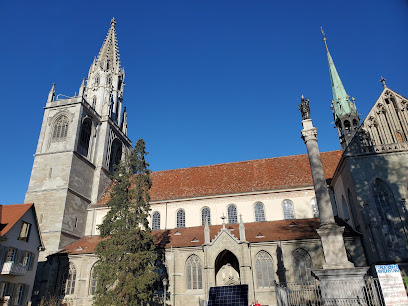
Mammutbaum
0.9 km
Experience the beauty of the Mammutbaum, a towering Giant Sequoia in Konstanz, Germany, where nature meets history in a serene park setting.

Essential places to dine
Papageno zur Schweizer Grenze
0.4 km
Experience authentic German cuisine at Papageno zur Schweizer Grenze in Konstanz—where tradition meets taste in a charming setting.
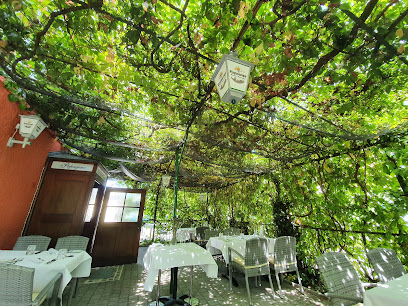
Restaurant Dischinger
0.6 km
Discover authentic German cuisine in the heart of Konstanz at Restaurant Dischinger, where tradition meets taste.
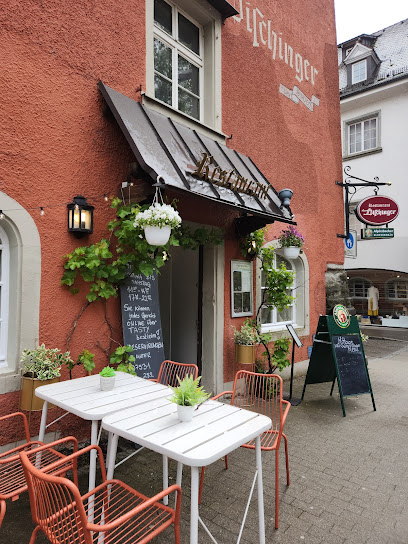
Hexenküche
0.7 km
Discover Hexenküche in Konstanz: A top-rated steakhouse offering exquisite dishes and a delightful atmosphere for food lovers.
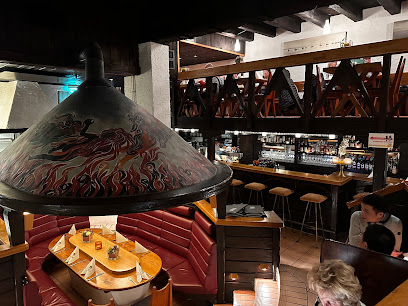
Romantik Hotel Barbarossa
0.7 km
Discover culinary excellence and historic charm at Romantik Hotel Barbarossa in Konstanz – your gateway to luxury dining and unforgettable experiences.
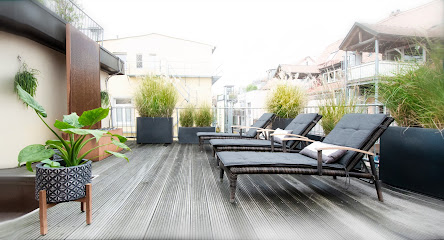
San Martino by Jochen Fecht | Michelin Sterne Restaurant und Bar
0.7 km
Experience culinary excellence at San Martino - a Michelin-starred fine dining restaurant in Konstanz's historic center.
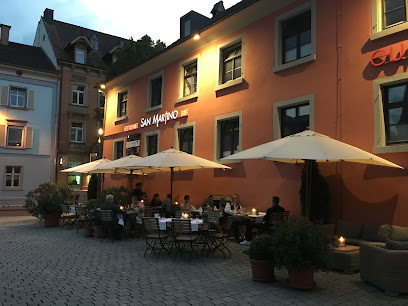
Good Rice zum Elefanten
0.8 km
Experience authentic Vietnamese cuisine at Good Rice zum Elefanten in Konstanz - a culinary journey filled with flavor and tradition.

Cafe Münsterhof
0.8 km
Discover authentic German flavors at Cafe Münsterhof in Konstanz – where tradition meets modernity in every bite.
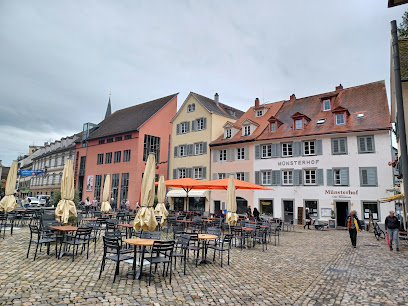
Tolle Knolle
0.9 km
Experience authentic German cuisine at Tolle Knolle in Konstanz, where every dish tells a story of tradition and taste.
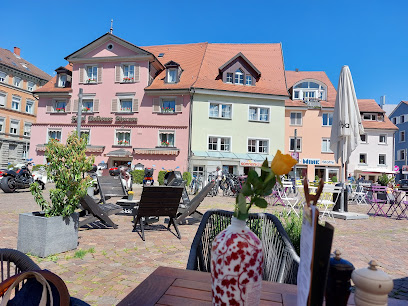
Brasserie Colette Tim Raue
0.9 km
Experience authentic French cuisine at Brasserie Colette in Konstanz - where culinary tradition meets modern elegance.

Brasserie Chez Léon
0.9 km
Experience the best of Italian cuisine fused with brasserie charm at Brasserie Chez Léon in beautiful Konstanz.
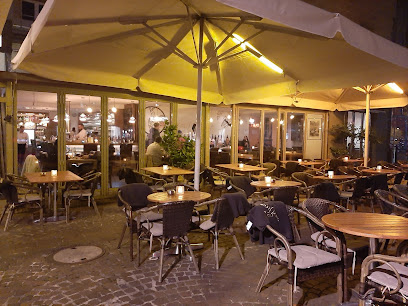
Mister Salami
1.0 km
Savor gourmet salami and local flavors at Mister Salami, one of Konstanz's most beloved restaurants.

Seekuh
1.0 km
Experience authentic Italian flavors blended with pub charm at Seekuh in Konstanz – your go-to spot for delightful dining.
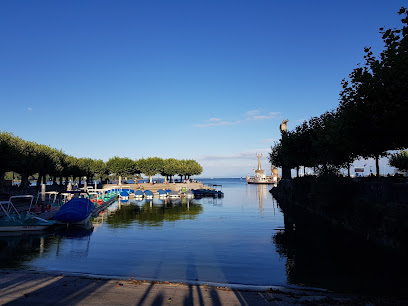
Restaurant Zur Wendelgard
1.0 km
Experience authentic German cuisine at Restaurant Zur Wendelgard in scenic Konstanz – where tradition meets flavor in every dish.
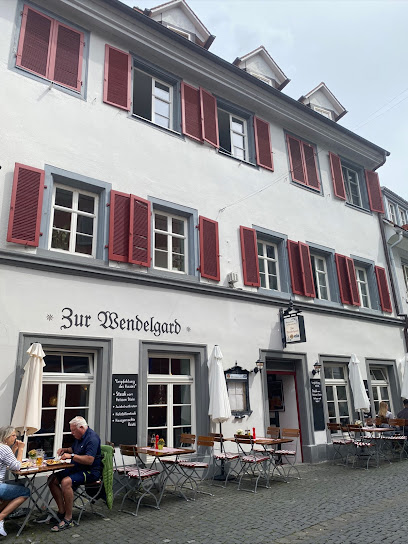
Konzil
1.0 km
Discover authentic Baden cuisine at Konzil, where stunning views of Lake Constance meet exceptional dining experiences.
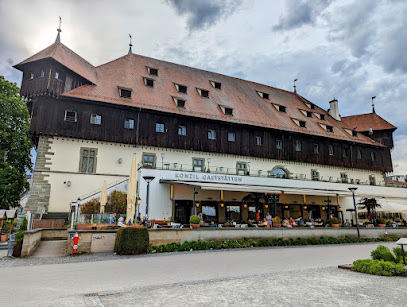
Hafenhalle
1.1 km
Discover Hafenhalle: A charming beer garden in Konstanz offering delicious food and an extensive selection of beers in a vibrant atmosphere.

Markets, malls and hidden boutiques
REYKJAVIK - nordic lifestyle
0.6 km
Explore Reykjavik: A vibrant fusion of art, culture, and stunning landscapes, perfect for adventurous travelers seeking unique experiences.

see u - souvenirs & gifts in konstanz am bodensee
0.7 km
Explore See U in Konstanz for unique souvenirs and gifts capturing the essence of Lake Constance.

Urs Portmann Tabakwaren AG
0.7 km
Explore Urs Portmann Tabakwaren AG, Kreuzlingen's premier tobacco shop, offering premium cigars and a welcoming atmosphere for enthusiasts.
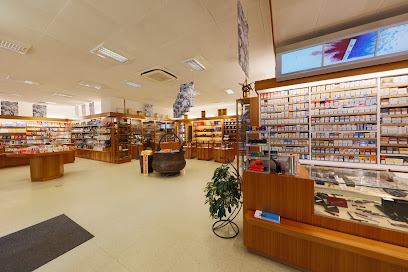
Ixe Boutique - Konstanz
0.8 km
Experience unique women's fashion at Ixe Boutique in Konstanz, where local craftsmanship meets contemporary style.
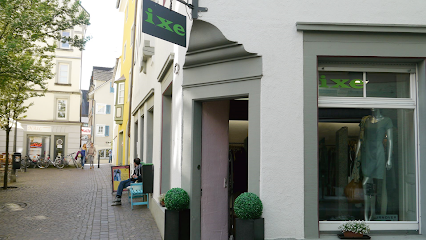
Casa Latina
0.8 km
Explore Casa Latina in Konstanz for a unique shopping experience showcasing diverse and vibrant fashion that reflects cultural richness.
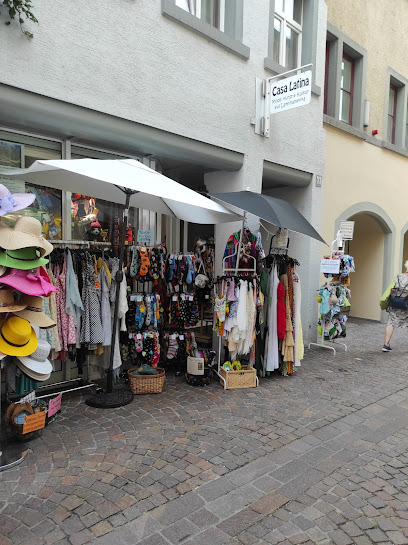
ALEX by ALEXANDER HEITZ
1.0 km
Explore ALEX by ALEXANDER HEITZ in Konstanz for a premium selection of bags, leather goods, and fashion accessories that combine style and functionality.

LAGO Shopping Center
1.0 km
Explore a shopping paradise at LAGO Shopping Center, offering a mix of retail, dining, and entertainment in Konstanz.
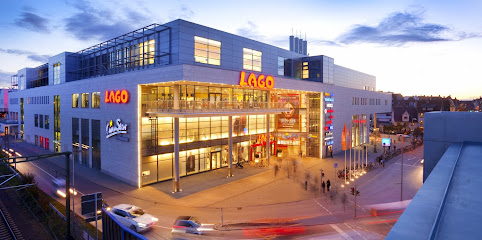
Spielwarengeschäft im LAGO Konstanz
1.0 km
Discover the magic of play at Spielwarengeschäft im LAGO Konstanz, a treasure trove of toys and games for all ages.

Einkaufszentrum Karussell
1.3 km
Explore a diverse shopping experience at Einkaufszentrum Karussell in Kreuzlingen, featuring top brands, dining, and family-friendly facilities.

Unique Style AG
1.5 km
Explore the latest fashion trends at Unique Style AG in Kreuzlingen, offering stylish clothing, chic accessories, and trendy shoes for every occasion.

Lido Shopping Point
2.5 km
Explore Lido Shopping Point in Kreuzlingen for an unforgettable shopping experience with diverse stores, dining options, and vibrant atmosphere.

Outlet Kreuzlingen | Strellson | windsor.| JOOP!
3.1 km
Discover unbeatable fashion deals at Outlet Kreuzlingen, the premier destination for stylish clothing from top brands in Switzerland.

Einkaufszentrum Seepark
3.2 km
Discover shopping, dining, and entertainment at Einkaufszentrum Seepark in Kreuzlingen, your ultimate retail destination in Switzerland.
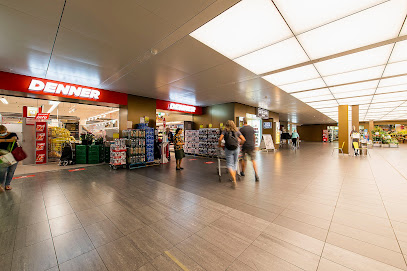
Chli und Härzig
5.3 km
Explore Chli und Härzig in Kemmental for unique gifts and baby items, showcasing local craftsmanship and culture in a charming Swiss setting.

www.xmen.ch
8.2 km
Uncover a diverse range of electronics and home essentials in Wigoltingen's premier shopping destination, perfect for tech lovers and families.

Essential bars & hidden hideouts
Vetter Adler
0.3 km
Experience the charm of Konstanz at Vetter Adler, a cozy bar known for its welcoming atmosphere and superb selection of drinks.
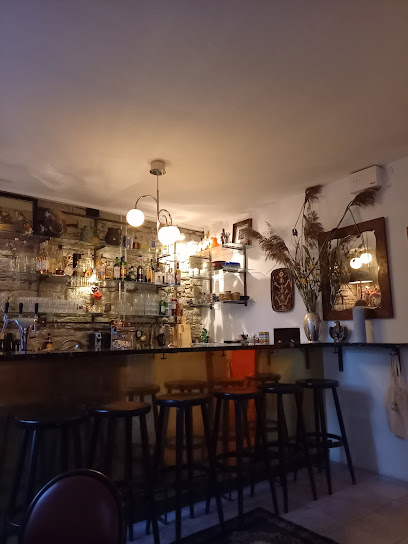
Bar Klimperkasten
0.6 km
Discover the vibrant nightlife of Konstanz at Bar Klimperkasten, where cocktails and camaraderie create memorable evenings in a charming setting.
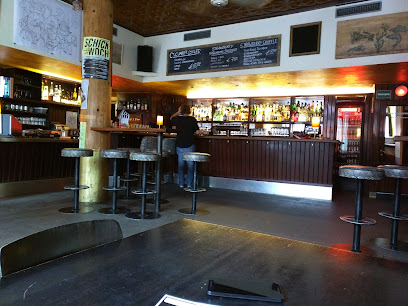
P-CLUB
0.6 km
Experience the vibrant nightlife of Konstanz at P-CLUB, where electrifying music and an energetic crowd create unforgettable memories.

Backstage Musikcafe
0.6 km
Discover the lively atmosphere of Backstage Musikcafe, the heart of live music and social gatherings in Konstanz.
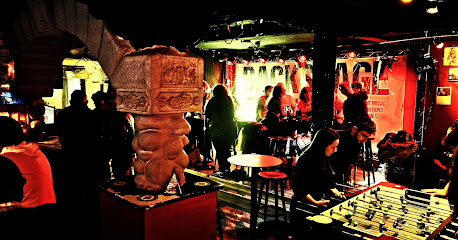
SHOTZ Konstanz
0.7 km
Discover the vibrant nightlife of Konstanz at SHOTZ Bar - affordable drinks, friendly ambiance, and a great place to meet locals.
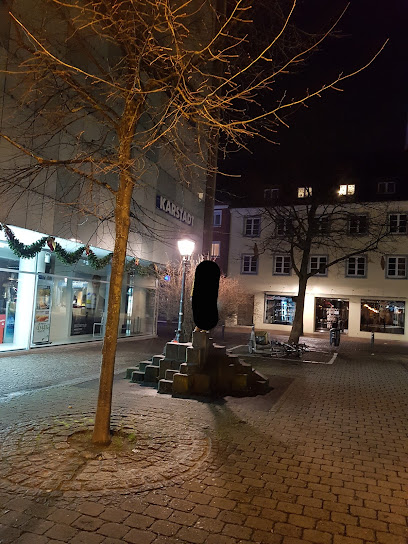
Einstein Bar Konstanz
0.7 km
Discover Einstein Bar in Konstanz for an exceptional nightlife experience with a variety of drinks and a vibrant atmosphere.
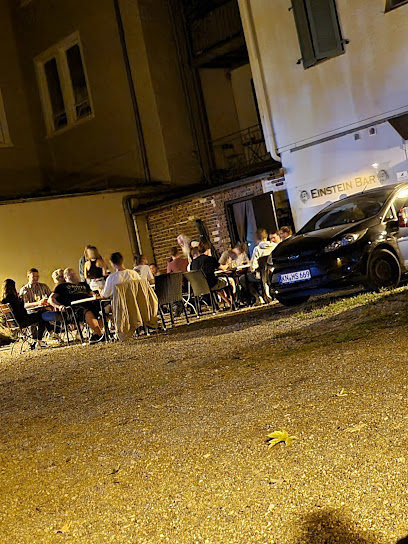
Manhattan Bar
0.7 km
Discover the lively Manhattan Bar in Konstanz, where delicious cocktails and vibrant nightlife await amidst a stylish atmosphere.

Consy Bar & Café
0.7 km
Discover the vibrant Consy Bar & Café in Kreuzlingen - where cocktails, live music, and a cozy atmosphere await you.
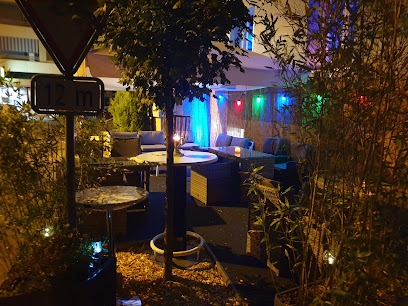
ess/bar
0.9 km
Discover the vibrant flavors of Ess/Bar in Konstanz, a gastropub blending local ingredients with international flair for an unforgettable dining experience.
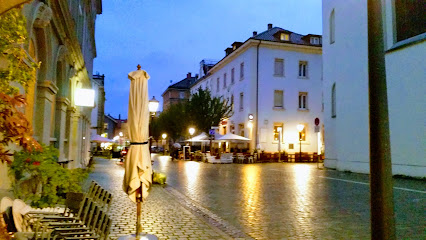
Blauer Engel Cocktail Bar
0.9 km
Experience the vibrant nightlife of Konstanz at Blauer Engel Cocktail Bar, known for its expertly crafted cocktails and inviting atmosphere.
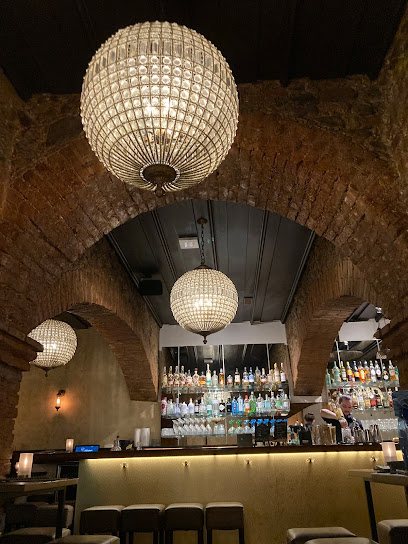
Heimat Bar
0.9 km
Experience the vibrant nightlife and local flavors at Heimat Bar in Konstanz, where every drink tells a story.

Stable
0.9 km
Discover Stable, the ultimate Irish pub experience in Konstanz, where hearty food, local brews, and friendly vibes await every visitor.
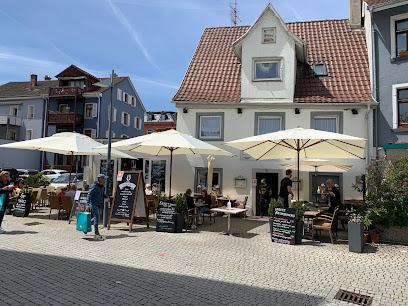
Khi-bar
0.9 km
Experience the vibrant flavors of Spain at Khi-bar, Konstanz's top tapas bar, where delicious small plates meet a lively atmosphere.
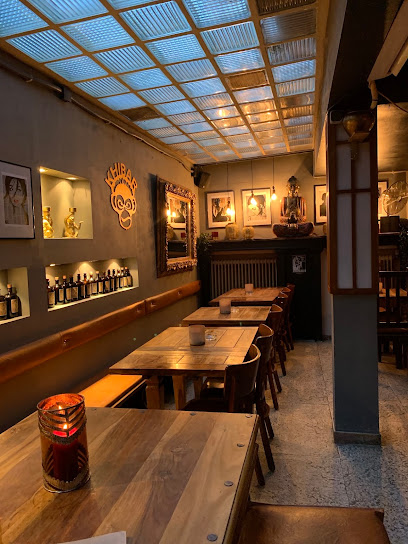
Strandbar Konstanz
0.9 km
Experience the vibrant atmosphere and breathtaking views at Strandbar Konstanz, a perfect lakeside retreat in the heart of Konstanz.
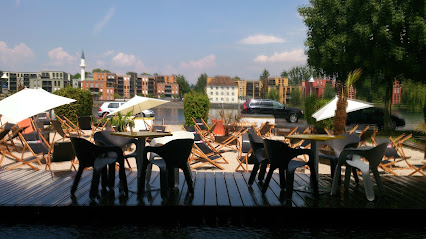
Pfiff Inh. Thomas Aich
1.0 km
Experience the vibrant atmosphere and delectable flavors at Pfiff Gastropub, a must-visit dining spot in the heart of Konstanz.




